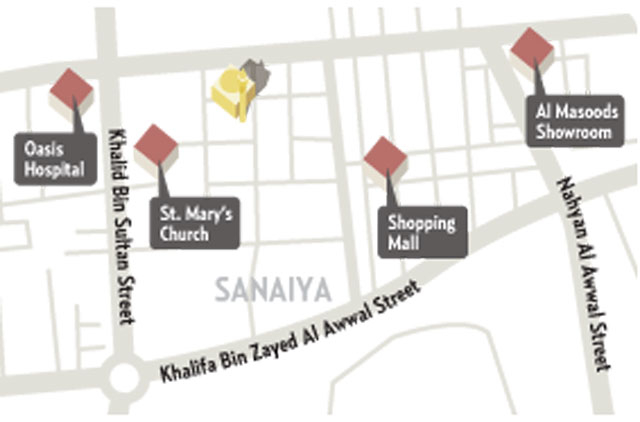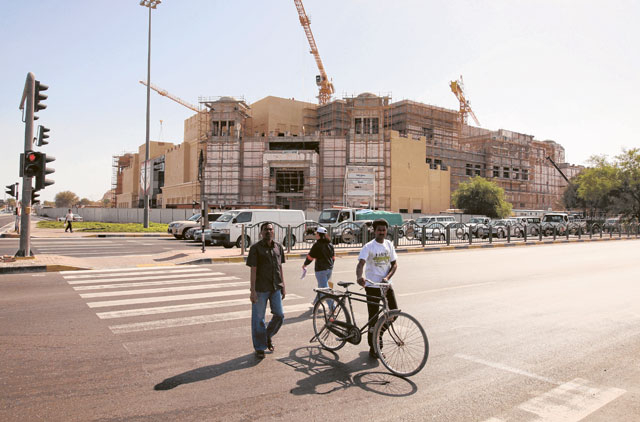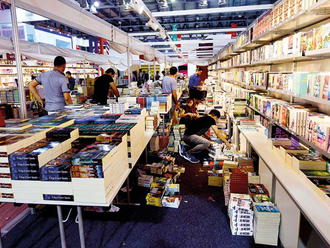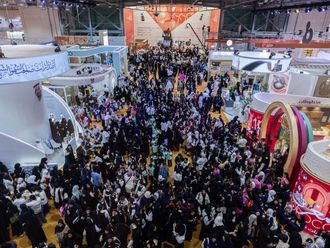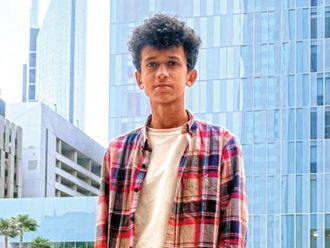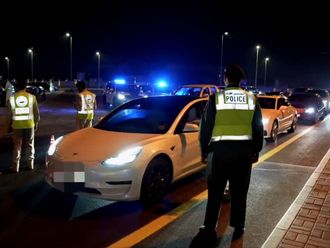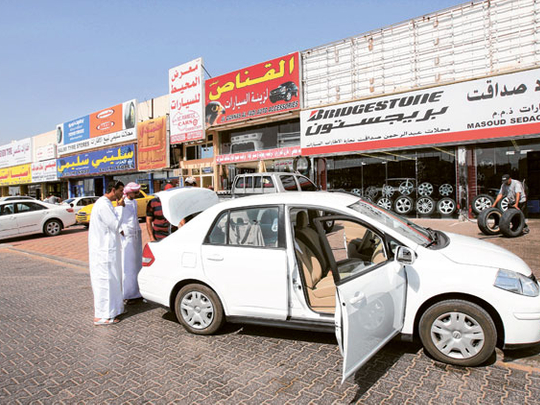
For many people, Sanaiya (Industrial Area) of the Oasis city is a scary place. It, however, holds a distinct feature of offering a solution to any problem that can possibly be solved.
Almost everybody in the city, whether someone likes it or not, has to visit Sanaiya in search of a quick and cheap fix from the sprawling small businesses. Apart from the dominating automobile repair workshops and garages, the district houses just ordinary groceries to shopping plazas and carpentry shops, building maintenance outlets, and blacksmith to big industrial plants and factories.
Just name a business or service, you will find one in Sanaiya, Shaukat Ali, a long-time resident of the area said. "It's a magical place and a complete world that has its own way of life and a cosmopolitan culture amalgamating the religious, social, and regional traits of the workers and residents who are mostly Pakistanis, Indians, Bangladeshis and Arab expatriates," he said.
Located just a five minutes' drive from the town centre on the Southern edge of the city, Sanaiya has mostly single and double story buildings. Most of these buildings are old or poorly built. It, however, has a specific ambiance for its colourful shops, noise of machines and faulty vehicles, high pitch conversations, and the smelly and dusty environment.
Divided into three sections, East, West, and Central, the place is overwhelmingly dominated by men who, according to a rough estimate, outnumber women by 1,000 to 1. It is said that this is due to the poor salaries of the workers and their bachelor status. "I am barely affording myself in this time of high inflation… I can't think of bring[ing] my family here even on visit visa," said Ravi Kumar, a restaurant worker. He has not visited his family for the last four years.
Women
Ravi said Sanaiya is not a residential area and it is also a reason for almost non-existent female population. "This creates an obnoxious situation when a woman comes to Sanaiya to get her car fixed," he said, noting that hundreds of men stare at her until she leaves.
He said it irritates the women sometimes forcing them to get out of the area as quickly as possible. "It might be a scary place for women, but I have not heard of any serious criminal act against them," said Ravi.
Shaikh Aftab Anjum, a businessman, said he has seen Sanaiya rising from sand dunes. "It used to be a shanty town having a couple of hundred shops built with wood and tin sheets," he said. Over the last 30 years, he said, the district has expended to hundreds of thousands shops, business houses, and factories. All of its sand dunes and rough streets have disappeared and modern structures and shopping centres have replaced the old buildings.
Sanaiya is a drivers' nightmare, as dozens of accidents occur here on daily basis. Many motorists describe the district as a battle ground and always breathe a sigh of relief and pray when get safely out of the area.
Mini trucks, cars, heavy trucks, vans, bikes, and even pedestrians compete on the road dodging and waving. Individuals and groups of pedestrians crisscross the roads at any point and time when they see the least opportunity.
Motor mechanics also test drive vehicles on the streets and nobody knows when a stationary car jump starts or moves back.
It is a terrifying experience to stand near the road as test vehicles suddenly pick up speed and halt in the middle of the road tires screeching.
Parking
Finding a parking place is another problem that often leads to arguments between visitors and the shopkeepers. Workshops spread to the pavements and public areas leaving no room for people to park their cars. In other areas pavements and parking lots are occupied by rent-a-car shops, oversized trucks, used vehicle sellers, and recovery service vehicles.
The district has two most popular squares that are known with the nicknames of Choghali Chowk (Backbiters' Square) and Kabutar (Pigeon) Roundabout. Shaukat Ali and Shaikh Aftab said people from different communities have long been gathering at different points in Sanaiya after finishing their daily work. Pathans, from Pakistan and Afghanistan, gather in the Eastern Sanaiya, and Indian, Bangladeshi, and rest of the Pakistani workers at different points in the central area.
Aftab said workers from a Pakistani district Sialkot gather at the Choghali Chowk every evening. "It's a meeting place for them where they share fresh news coming out of their respective countries and about the things happening at their work places with each other," he said. The square hums at times with low voiced chatting giving an impression of backbiting. This gave the square its popular name.
Pigeons
The Pigeon Roundabout is known for its hundreds of pigeons that are fed by the workers, shopkeepers, and the passers-by. "It's a big sign of compassion and virtue to feed birds," said Ali. The population of pigeons grows rapidly and municipality official regularly visits the area to catch the birds. "If you come early in the morning, you'll see the nets and traps in and around the roundabout," he said.
Unfortunately, the district has no public park or recreational centre in the vicinity. People sit outside the restaurants, road sides, and in front of closed shops to spend their time and discuss issues of the day. A number of internet cafés and health clubs also attract many visitors in the evening. Youngsters who love to play physical games such as cricket and football have been making a good use of a dried up water way. A cement wicket has been prepared in the dry canal and its banks become the sitting area for spectators during a cricket match on Fridays.
Facilities
Assad Bashir, a businessman, said Sanaiya is totally different from other districts as it is the commercial and industrial hub of the city. The district is being modernised but still lacks many facilities. "I think Sanaiya needs a public park where workers and residents of the area could enjoy their time in the free hours," he said.
Since a majority of the residents are bachelors, they love to sit in groups in evening up to the middle of night to play cards and other games and pass their time by chatting and discussing different issues of mutual interest. "Provision of [a] park would give them [a] peace of mind and since they cannot sit all the time on road sides," he added.
TOP PICKS
- Restaurants: Sanaiya district has numerous small cafeterias and food outlets. There are many traditional Arabic, Pakistani, Indian and Bangladeshi restaurants in different nooks and corners of the district. These include Nadeem Restaurant, Abdul Aziz Restaurant, Balbak Restaurant, Daska Restaurant, Shehab City Restaurant, and Golden Saher Restaurant. In addition, some specialised sweet shops, such as Al Dhafra Sweets, are centre of traditional India Pakistani delicacies.
- Hospitals: Oasis Hospital is located close to Sanaiya. The district itself has no hospital in the area but all the major hospitals of the city are 10 to 15 minutes' drive away. There are, however, a number of clinics in the area.
- Shopping Centres: A new shopping centre The Mall is currently under construction in the area. A number of gift shops and super markets are popular shopping spots. These include Lulu Hyper Market, Mubarak Super Market, Hira Bazar, and Al Ain Gift Centre. Small grocery stores can be found all over the district.
- Hotels: Being an industrial district of the Oasis city, no hotel is located in the area. A luxury hotel is currently under construction at the northern edge of the district at Al Nagfah Mountain.
Have your say
Do you live in the Sanaiya area and have a story to tell us? What is your opinion of the
changes that have taken place in your area? Do you live in another neighbourhood and would like to tell us about it?


